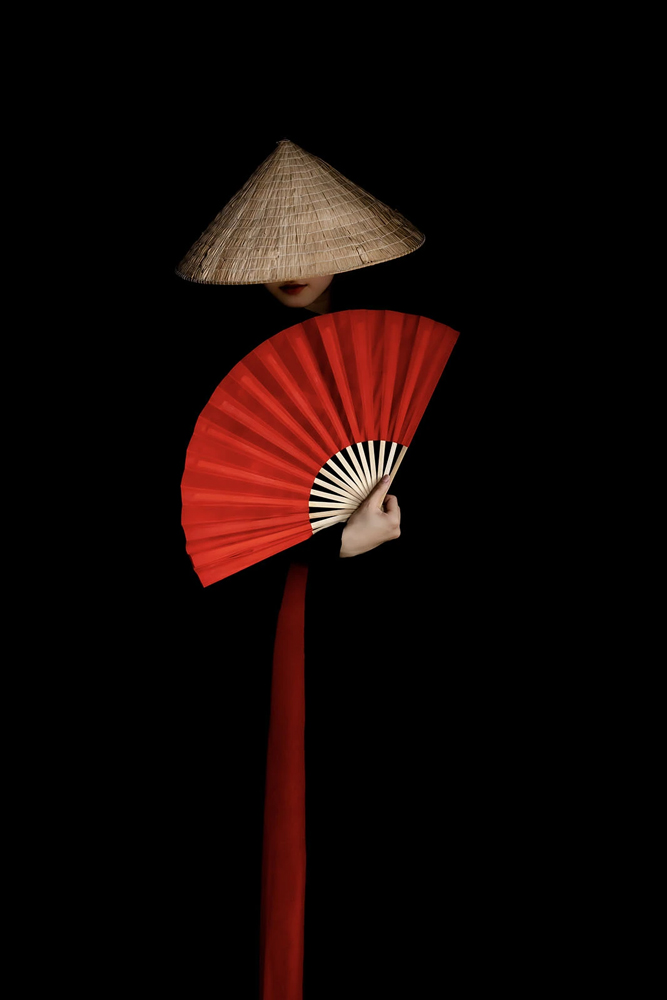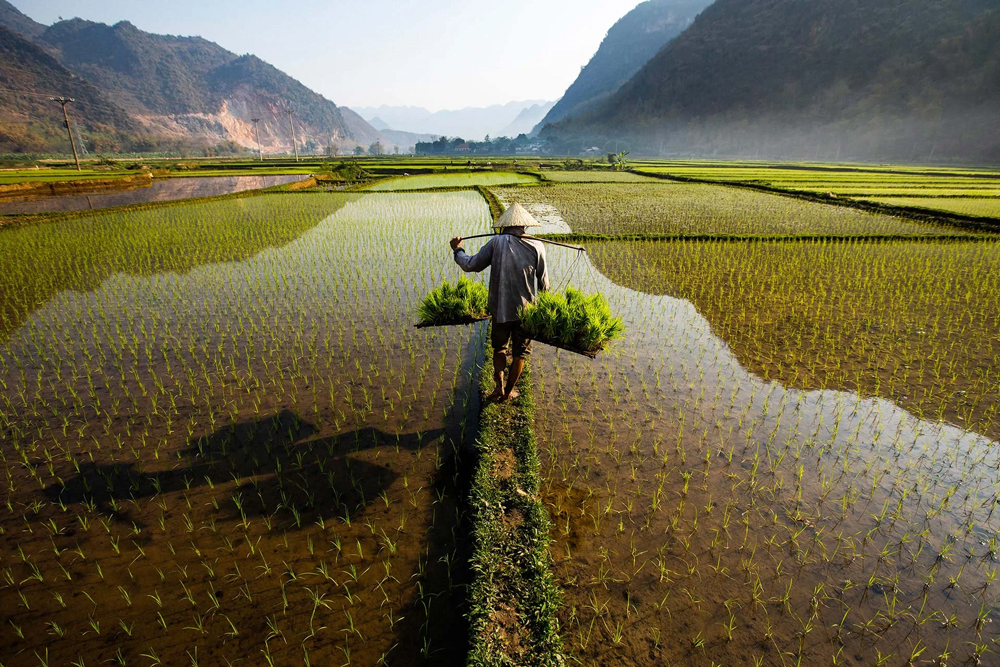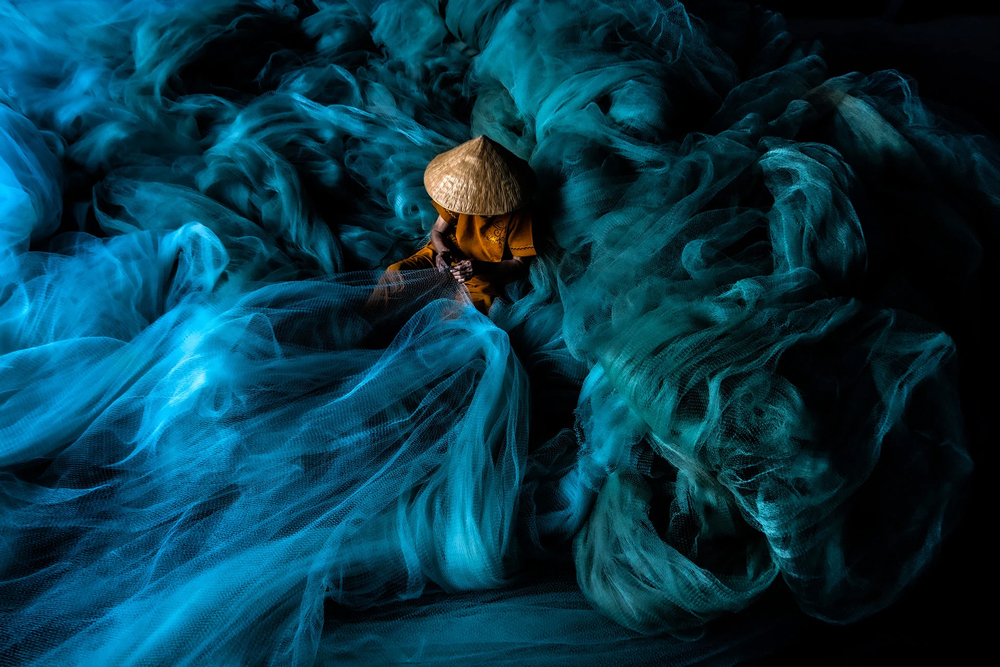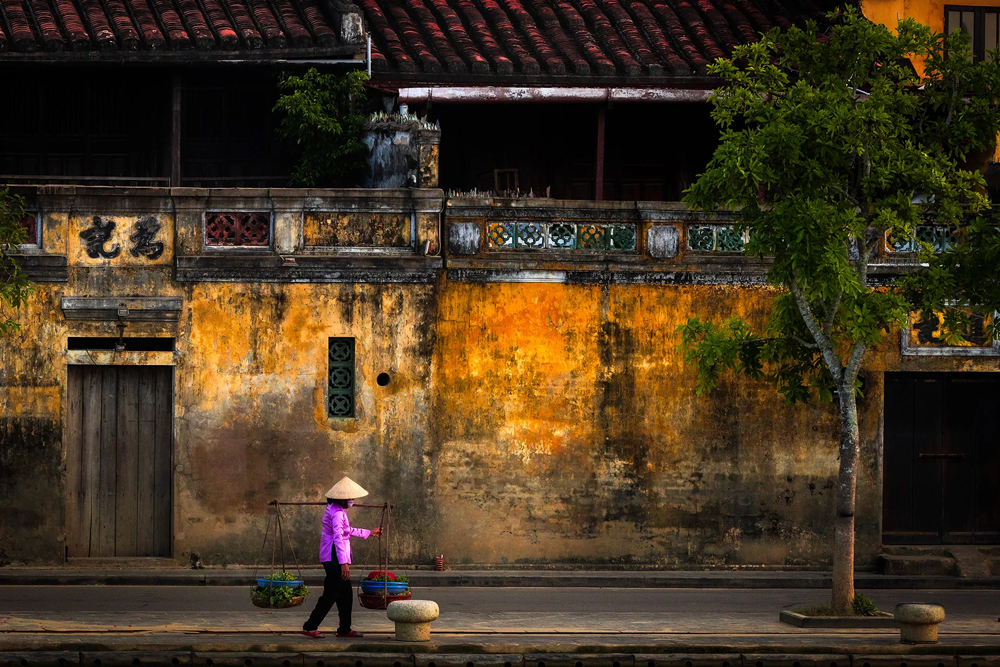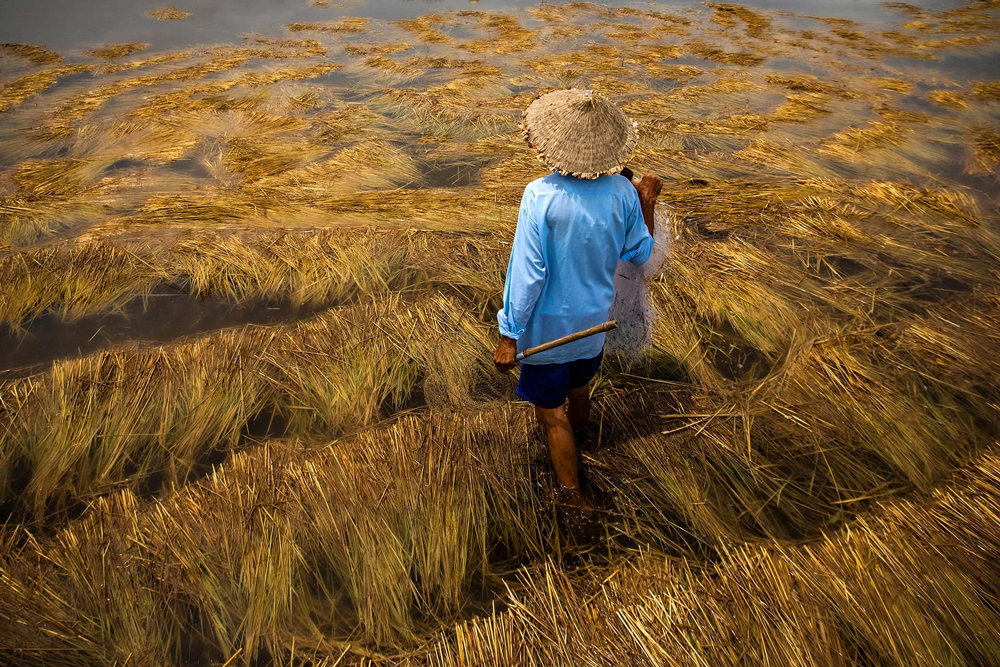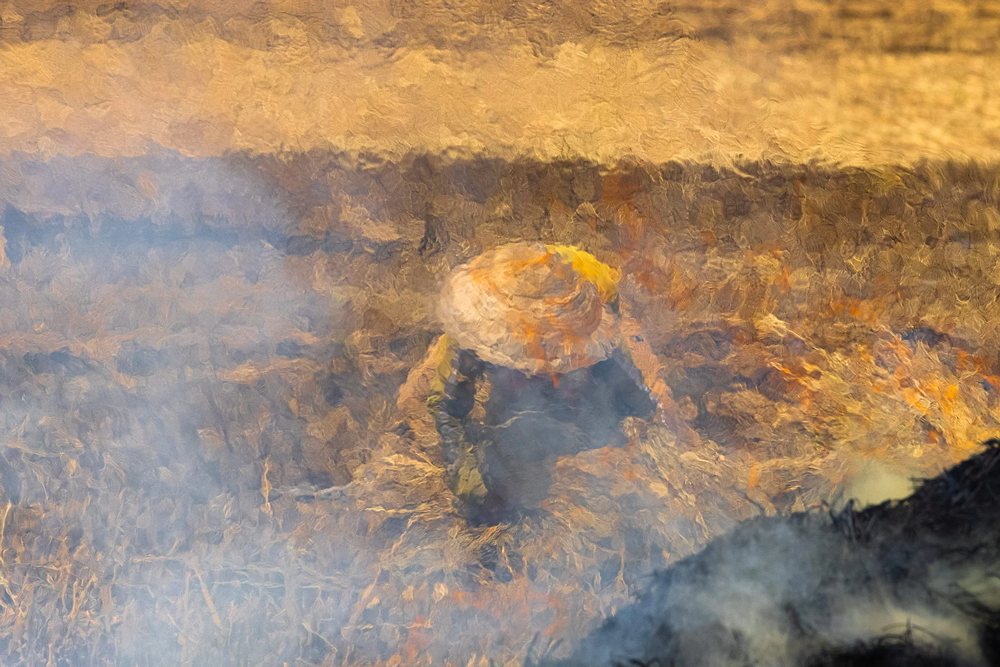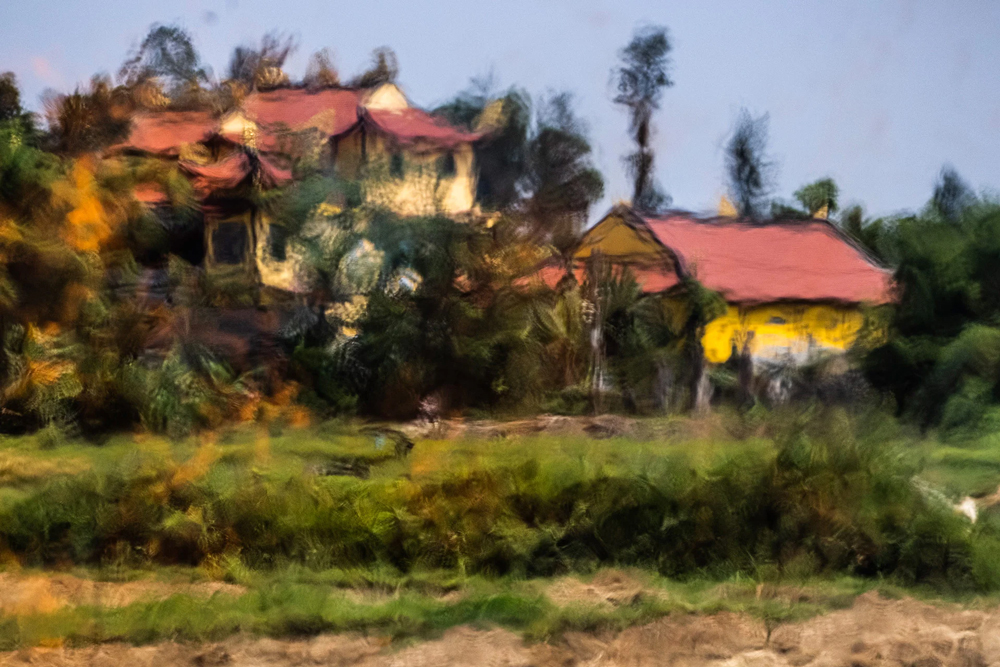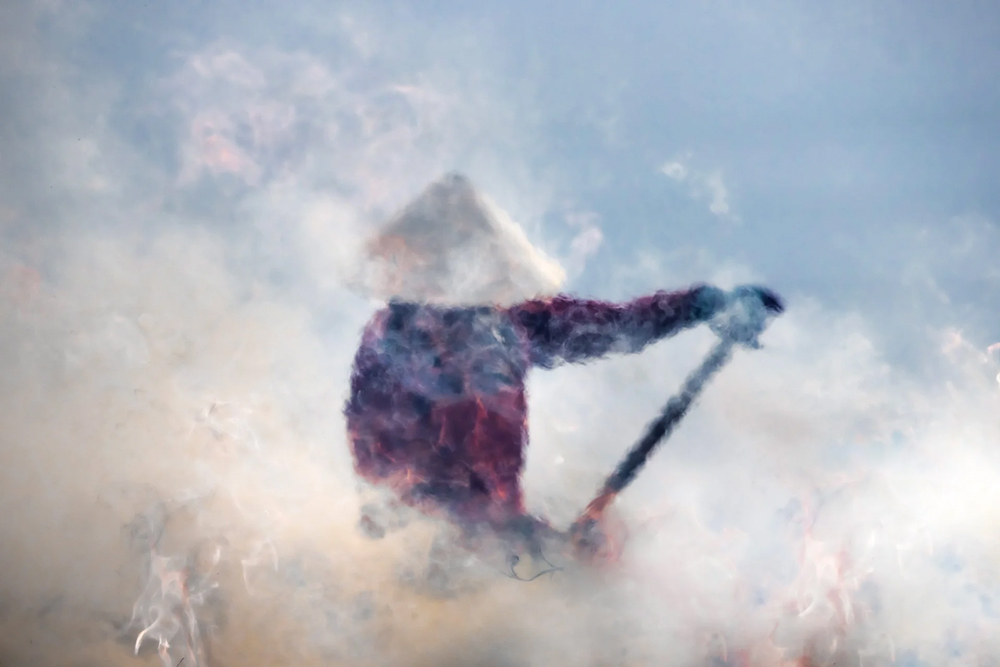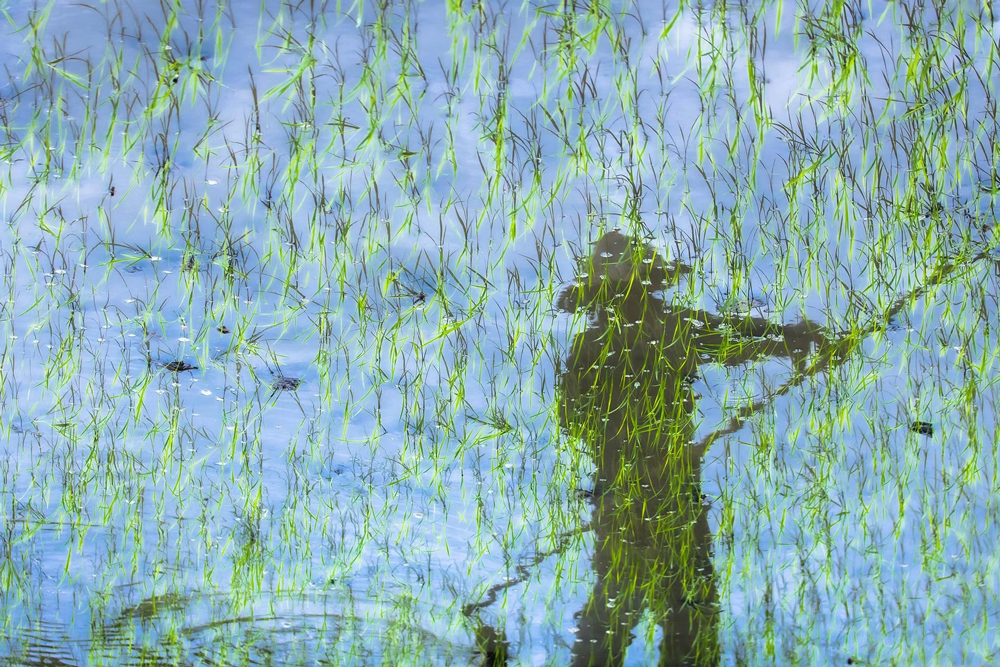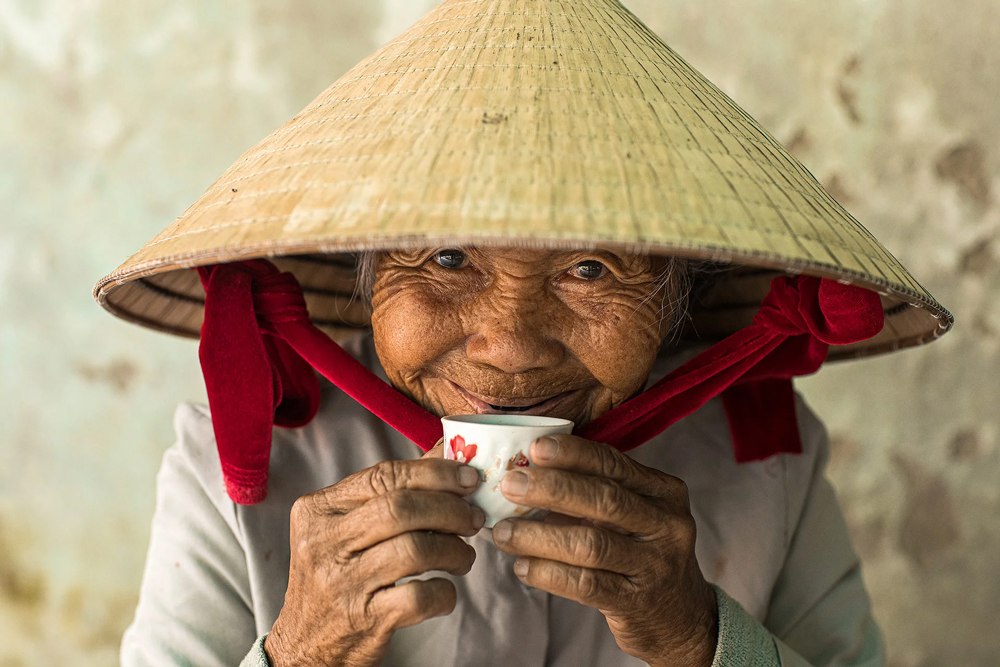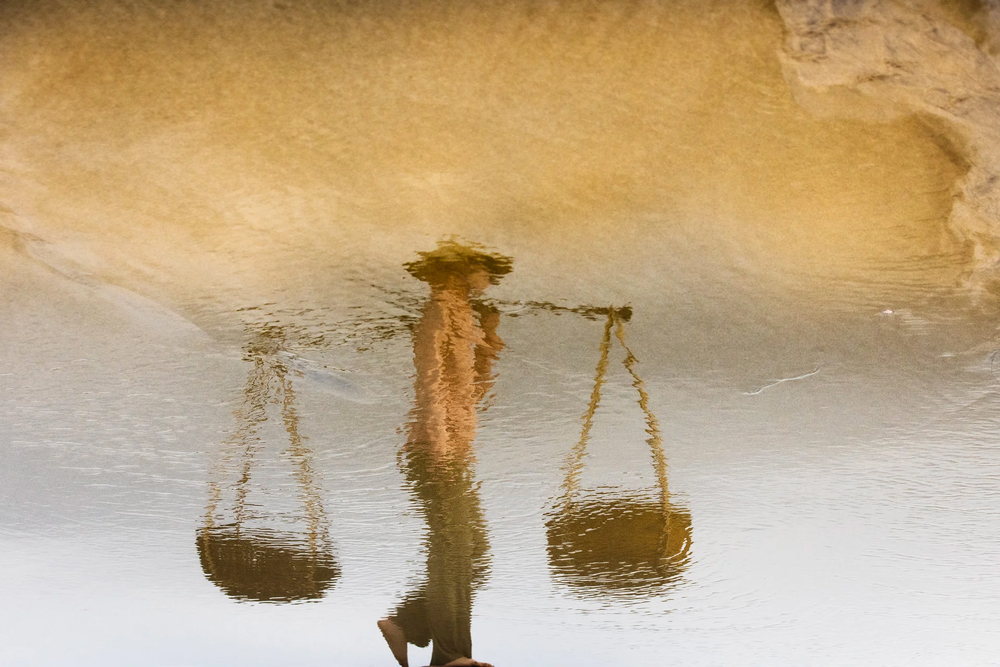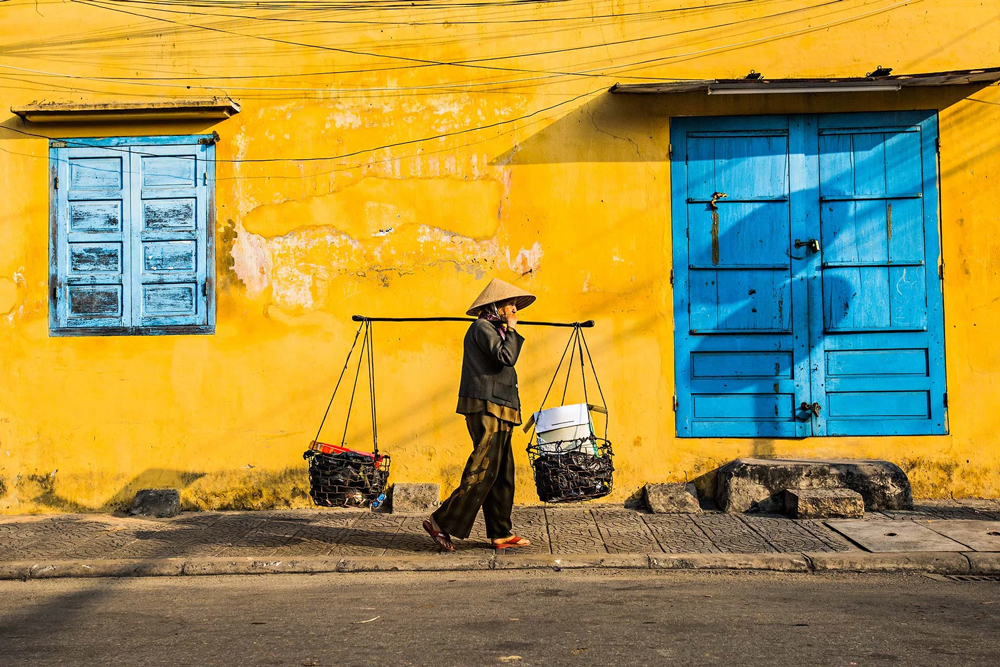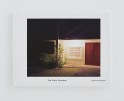Réhahn: Memories of Impressionism
The photographer and artist who goes by the moniker, Réhahn, is a French expatriate who has created his photographic mark in his adopted country of Vietnam since 2011. Originally from Normandy, he has created a new body of work in the rice fields of Vietnam that blends the historic artistic techniques of his country of birth with the romantic landscapes and reflections of his adopted home. His series, “Memories of Impressionism“, employs the natural phenomena of heat, water reflections, and the play of light in an effort to replicate the soft focus of the Impressionist and Post-Impressionist painters of late 19th century, early 20th century France. To his credit, Réhahn does not employ filters or intentional camera movement to mimic the hazy serenity of his forebears. Instead, he plays with silhouettes in water-filled rice paddies or grapples with the blistering heat that shimmers during the rice harvest. In either instance and throughout his work, the play of colors is paramount.
As Réhahn explains, “…I endeavor to explore the essence of the Impressionist movement within the realm of contemporary photography. Through this project, I aim to pay homage to the philosophies of renowned Impressionist and Post-Impressionist artists while reinterpreting their principles through a modern lens. The photographs are not meant to recreate their works, instead I hope to bring a new vision to certain principles such as capturing fleeting moments, the impermanence of light and seasons, and the importance of pastoral art in our technology-focused societies.
My inspiration for this series stemmed from a period of introspection during the Covid confinements, where I immersed myself in the lives and works of artists such as Monet, Renoir, Cezanne, and Van Gogh. As a child, I spent a significant amount of time in Honfleur, France—the birthplace of Impressionism—where I still own a home. I’ve built my life and career in Vietnam, a country I love, yet there was something that pulled me back to these early influences … taking in the same light on the harbor that Monet painted in Honfleur, seeing the ways that the colors of the harvest in Vietnam mimicked the golden tones that Van Gogh painted in Arles, France. There were these invisible links that connected me to both countries, numerous cultures, and periods in time. Drawing from the influence of Japonism, Impressionism, and Post-Impressionism, I sought to infuse my photography with the spirit of these links. In addition, the pandemic forced the world to slow down, and I believe this meditative transformed the way that I looked at the world around me.
I began by exploring reflections. The movement of the wind on the water distorts the reflection and lends a blurred effect to the image, like smears of paint. The Heat series emerged from the serendipitous discovery of capturing images amidst post-harvest rice field burning, resulting in textured compositions. By shooting through distorted air created by high heat levels, my subjects take on a surreal aspect, with the colors seemingly daubed on the photographic paper in dots and smudges. I don’t use any filters or editing to create these effects.“
Réhahn was born in Bayeux in Normandy, France. An avid traveller, he voyaged to more than 35 countries with his camera before settling in the coastal town of Hoi An. Vietnam and its culture had inspired him since he visited for the first time while on a humanitarian mission with the French NGO Les Enfants du Vietnam.
Réhahnʼs unique combination of Fine Art and Documentary styles has been featured in international media totaling more than 50 television appearances and 600 articles (most notably in Condé Nast Traveler, The New York Times, National Geographic, and BBC among others.)
Réhahn’s early projects, “Hidden Smile” and “Ageless Beauty”, resulted in some of his most celebrated images, including the iconic “Hidden Smile”, which was inaugurated into the permanent collections of The Asian House Museum in Havana, Cuba (2015) and the Hanoi Women’s Museum (2016). In addition, the portrait was given as a diplomatic gift from the Former President of Vietnam to French President Emmanuel Macron in celebration of 45 years of friendship between the countries (2018). His pinnacle “Precious Heritage” project, which took more than a decade of research, began as a mission to document the cultures and craftsmanship of all 54+ ethnic groups in Vietnam. A curated exhibit of the resulting collection was presented at The Museum of Ethnology in Hanoi. The artist was featured on the French television program Échappées Belles (2016) and awarded the Trophy for French Nationals Abroad for his cultural preservation work (2018). Réhahn opened the Precious Heritage Museum and Art Gallery in Hoi An in 2017, in order to create a permanent location to share Vietnamʼs ethnic heritage. It is free to all visitors.
Instagram: @rehahn_photography/
What drew you to the style of impressionist photography, and how do you translate the essence of Impressionist paintings into your photographic compositions?
I was initially drawn to Impressionism because it was founded on certain ideas that resonated deeply with me, such as the acknowledgment that every moment is fleeting. Light and colors are constantly shifting, along with seasons and cycles. The way the Impressionists went about portraying this transience through swift brushwork, perspective, and large washes of color inspired me to try to translate their philosophies into a different medium – photography.
I started my Impressionist series in late 2019/early 2020, and I was able to focus on it during the Covid confinements. I spent a lot of time researching the works and philosophies of painters such as Monet, Degas, Cezanne, and Van Gogh among others. And became obsessed with learning more about their influences.
I began my series by experimenting with reflections since the movement of the water naturally distorted the subjects/scenes and gave the dreamlike quality that I was looking for in my work. Eventually, I started playing with heat waves as well to try to create the textural elements that pulled the photos out of reality and blurred the line between photography and painting.
My works are not meant to copy the paintings of the master Impressionist painters. I’m interested in rethinking their philosophies in a contemporary context and with a new medium.
Can you elaborate on how Impressionist artistic principles influence your approach to capturing light, color, and mood in your photographs?
Impressionist artistic principles heavily influence my approach to photography, particularly in terms of capturing light, color, and mood. Like the impressionist painters, I prioritize capturing the effects of light on a scene, whether it is the soft glow of dawn on water or sunlight filtered through smoke. Color plays a central role in conveying mood and emotion in my photographs. I’ve read dozens of books about the color palettes of the Impressionists and Post-Impressionists to understand the emotional pull of different tones and how they used vibrant hues and subtle gradients to lend depth and dimension to their compositions. I was also deeply influenced by the Japonism movement in Fine Art, which utilized certain perspectives and styles of Japanese block prints to depict what they called a “floating world” of leisure time, seasonality, and the cycles of life.
You’ve mentioned photographing the same locations at different times and seasons to capture the ever-changing beauty of light and color. Could you share a specific example of how this practice has led to a particularly striking or unexpected image?
One example of this is with my rice field photographs. I’ve photographed the rice fields around Hoi An for more than a decade and have always been fascinated by the differences in colors during seasonal changes. When I started my Impressionist photos, I naturally returned to the countryside and came across farmers burning their fields after the harvest to replenish the soil and collect the ash for peanut gardens. The heat from the fire distorted the fields, making the air wavy and the image behind blurry. Out of curiosity, I tried to shoot through the distortion, and I got some really surreal images that made the scene look like it was created with strokes of paint rather than reality. The first photo I released from this experiment is called “Flame.”
This technique isn’t easy because of the elements of smoke, fire, and heat, but I love the way that I’m at the mercy of the environment. Another thing that I think is interesting is that all of these heat photos share a certain moody color palette – gold, rust, gray, cream, red – colors that naturally create warmth and drama.
Impressionist photography often involves a balance between technical precision and artistic interpretation. How do you navigate this balance in your own work, especially when it comes to capturing the soft focus and blurred edges characteristic of the style?
Navigating the balance between technical precision and artistic interpretation is a central aspect of Impressionism. Impressionist painters such as Monet, Renoir, and Pissarro were all classically trained. They all knew exactly how to paint a perfectly realistic landscape or subject. Yet, that’s not what they wanted. They wanted to cross a boundary and separate their works from what came before. Their technical knowledge helped them to understand color theory and form, but their works shifted into another realm of expression when they realized they didn’t need to create a copy of what they saw. Instead, they created an impression … a moment in time that could evoke a different response in different viewers.
In terms of my own work, technical proficiency is essential for achieving desired effects such as soft focus and blurred edges, but artistic intuition ultimately guides the creative process. I try to allow room for spontaneity and experimentation because this isn’t studio photography where I can control every light and shadow. The ultimate challenge is letting go of what I expect a photo to look like and just shooting with the hopes of getting one good image out of about 100 attempts.
How does your approach in this project differ from the practice of Intentional Camera Movement?
I don’t deliberately move the camera during exposure like in ICM. Instead, I get the blurring and textural effects through natural occurrences in my environment. I shoot reflections or through heat shimmer, as mentioned before, so that the movement of the water or the air creates the distortion rather than my movement.
Your images convey a sense of serenity and tranquility. Can you discuss the role that mindfulness and patience play in your creative process, particularly when waiting for the perfect moment to capture a scene?
Mindfulness and patience are integral to my creative process, especially when waiting for the perfect moment to capture a scene. I try to fully immerse myself in the present moment and allow myself to connect with the beauty of my surroundings. This sense of presence enables me to notice subtle details and nuances that might otherwise go unnoticed. For example, I mentioned that I’ve been shooting the rice fields for more than a decade, but I only noticed the heat shimmer when I started my Impressionist photos. The same thing with reflections. I have thousands of photos shot on the waterways throughout Vietnam, but I never paid attention to the differences in the reflected world on the water until I started this series. Now it is all I see!
Patience is equally important, as I often spend extended periods waiting for the perfect light or composition to materialize. I am at the mercy of the seasons and agricultural cycles. The burning of the fields only happens twice a year, certain plants only bloom during specific times, and the light changes dramatically from month to month, so I know that I have to play a long game and not get caught up in trying to control things too much.
Vietnam’s landscapes and people feature prominently in your photography. How does living in Vietnam influence your artistic vision, and how do you incorporate the unique colors and light of the region into your compositions?
Living in Vietnam has had a profound influence on my artistic vision, shaping the way I perceive and interact with the world around me. The vibrant cultures, rich textures, and dynamic light of the region serve as constant sources of inspiration, informing my approach to composition and storytelling. I spent more than a decade photographing Vietnam’s different ethnic groups for my Precious Heritage Project, and as a result, I traveled all over the country. Each region has different lights, colors, and rhythms. I don’t think that I would have remained so passionate about this project for so long if I hadn’t been inspired by these shifts, as well as their importance in cultural traditions. In addition, the Vietnamese people are very welcoming. This positivity contributes to my inspiration. I want to portray them, their knowledge, their heritage in a respectful way, and so I’m always striving to find new ways to share the beauty of this country with the rest of the world.
Could you share any challenges you’ve encountered while practicing impressionist photography, and how you’ve overcome them to achieve your artistic vision?
One of the main challenges I’ve encountered is striking the right balance between distortion and reality. My techniques have required multiple iterations and adjustments to achieve the desired result. For example, for my heat photos, if the wind blows too much it can make the scene become obscured by the smoke. Or if I’m shooting a reflection, and there is no wind, I can’t get the desired amount of movement to smudge the lines of the subject and create the style that I want. To overcome this challenge, I have to know exactly when the best times of days/seasons are and also be willing to change my plan if something isn’t working.
Lastly, what advice would you offer to aspiring photographers looking to explore impressionist photography or develop their own unique artistic style?
My advice to aspiring photographers is to embrace experimentation and creative exploration. Don’t be afraid to push the boundaries of traditional photographic techniques and conventions and allow yourself the freedom to express your unique vision and perspective. Remember that photography is as much about the process as it is about the final result, so don’t be discouraged by setbacks or challenges along the way. Stay true to yourself and don’t take too much stock in what others tell you. After all, the Impressionists were completely disregarded by the critics, to begin with, until people started to understand and respect what they were trying to do. It’s ok to not follow what other people tell you is “good art.”
What is on the horizon for your next photographic endeavors?
Looking ahead, I’m excited to continue exploring the intersection of painting and photography (https://www.rehahnphotographer.com) by further refining my impressionist photography style and pushing the boundaries of the medium. We’ll see where it takes me!
Posts on Lenscratch may not be reproduced without the permission of the Lenscratch staff and the photographer.
Recommended
-
Réhahn: Memories of ImpressionismJune 17th, 2024
-
Shinichiro Nagasawa: The Bonin IslandersApril 2nd, 2024
-
Photographers on Photographers: Barry Schwartz in Conversation with Jana AšenbrennerováJune 30th, 2023


